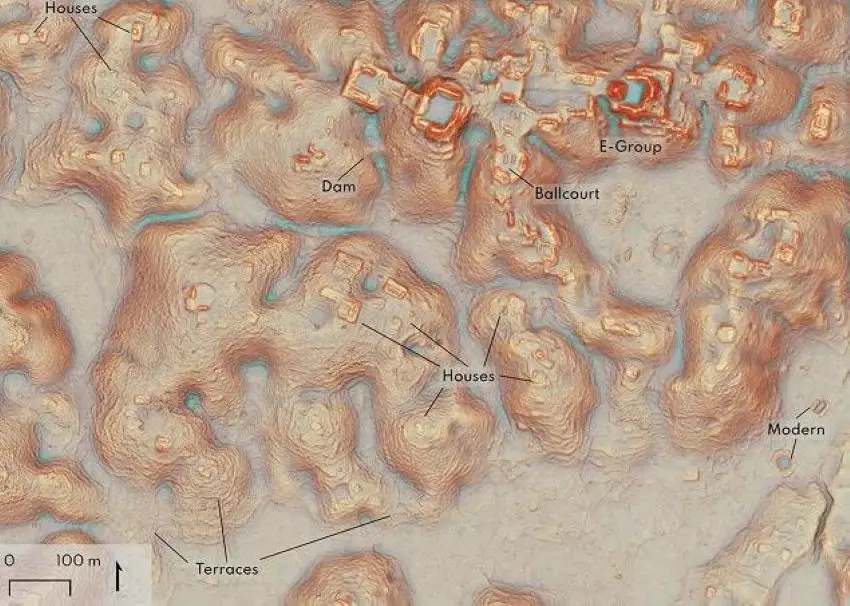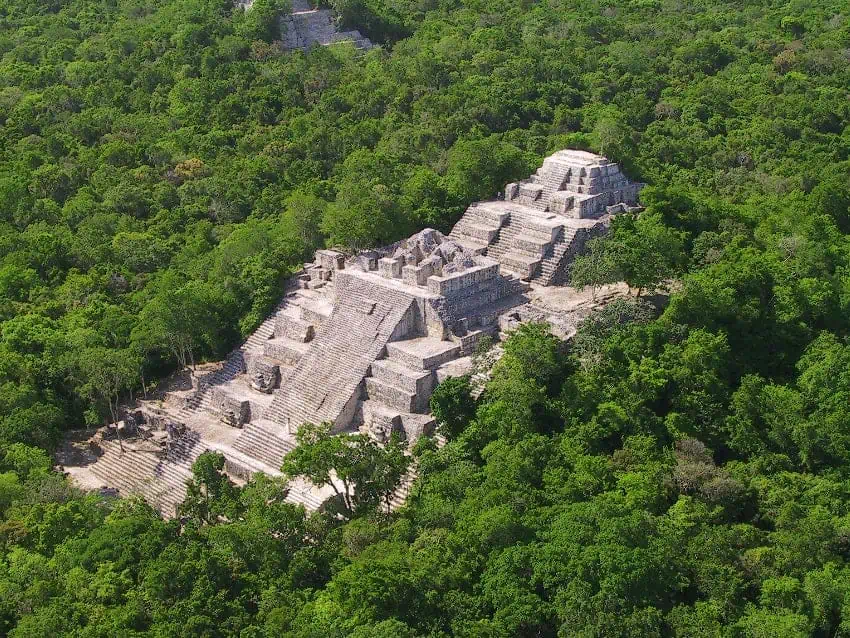PhD student ‘accidentally’ discovers lost Maya city in Mexico

A team of archeologists has unearthed the existence of a previously unknown ancient Maya city hidden deep within the Yucatán Peninsula jungle, a discovery triggered by a PhD student doing a Google search.
The ancient city’s discoveries include pyramids, sports fields and causeways connecting districts and amphitheaters in the southeastern state of Campeche. Archeologists have dubbed the complex Valeriana, named after a nearby lagoon.

“I was on something like page 16 of Google search and found a laser survey done by a Mexican organization for environmental monitoring,” Luke Auld-Thomas, a PhD student and lead researcher of a study about the finding published Tuesday in the British archeological journal Antiquity.
The data Auld-Thomas saw on Google — commissioned in 2013 by The Nature Conservancy México as part of an ecological survey — revealed to him what others had missed: the ruins of a huge ancient city.
Valeriana is located near the town of Xpujil, located near Campeche’s border with Quintana Roo and populated mostly by modern-day Indigenous Maya.
“For the longest time, our sample of the Maya civilization was a couple of hundred square kilometers total,” Auld-Thomas told The Guardian newspaper. “That sample was hard won by archaeologists who painstakingly walked over every square meter, hacking away at the vegetation with machetes to see if they were standing on a pile of rocks that might have been someone’s home 1,500 years ago.”
But lidar, which began to be used in Mesoamerican archeological study in the last two decades, has changed the game, allowing researchers to detect ancient structures covered by canopies of vegetation and invisible to the naked eye. In January, researchers using lidar discovered a huge city in Ecuador’s Amazon jungle dating back 2,500 years that is challenging the prevailing belief that Amazonian civilizations in South America lived in nomadic settlements.
Six years ago, some of the same researchers involved in Auld-Thomas’ study used lidar to detect tens of thousands of Maya buildings and pyramids in Guatemala’s Petén region, which supports the surprising idea that millions of people lived there, the Guardian reported.


Short for Light Detection and Ranging, lidar uses pulsed lasers to examine the earth’s surface. It can map structures buried under dense vegetation and generate precise 3-D information about the earth’s surface from a plane flying over an area. The technology has unearthed other archeological findings in Mexico, including ancient ceremonial centers and new data about the size of pre-Hispanic settlements.
Archeologists have known since the 1940s that the ancient Maya made significant changes to the landscape around Xpujil, mainly in the form of minor settlements and hillside terraces for farming. However, the new research shows Valeriana to have the hallmarks of a Maya political capital, with a density of buildings second only to Calakmul, one of the largest and most powerful Maya cities ever uncovered — a fact determined in 2022 by using lidar.
Auld-Thomas’ study posits that at its peak — from A.D. 750-850 — Valeriana may have been home to 30,000–50,000 people.
Professor Elizabeth Graham from University College London, who was not involved in the research, told the BBC that the new finding supports claims that the Maya in the area lived in complex cities and towns, not in isolated villages.
“The point is that the landscape is definitely settled — that is, settled in the past — and not, as it appears to the naked eye, uninhabited or ‘wild,’” Graham said.
For Auld-Thomas — who in the study called the east-central area of Campeche where Valeriana was found “a blank spot” for researchers — the new findings show that this part of the Yucatán Peninsula could yet reveal many more undiscovered archeological treasures, he told the Guardian.
“The government never knew about it; the scientific community never knew about it,” he said. “That really puts an exclamation point behind the statement that, no, we have not found everything, and, yes, there’s a lot more to be discovered.”
With reports from BBC and The Guardian
Source: Mexico News Daily

